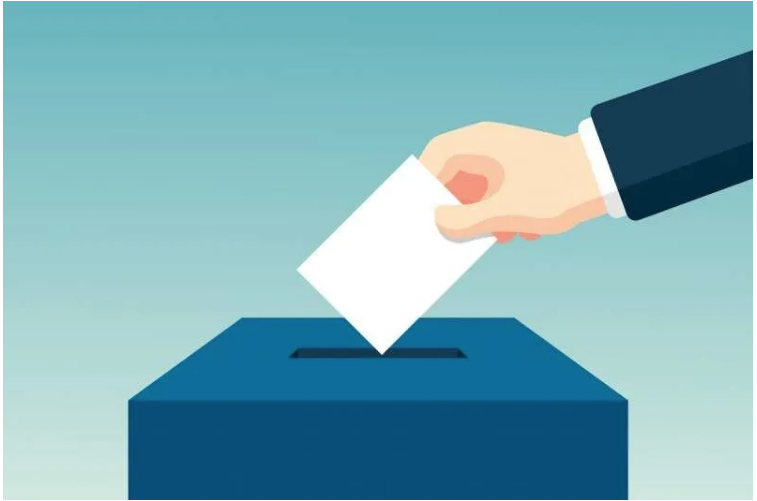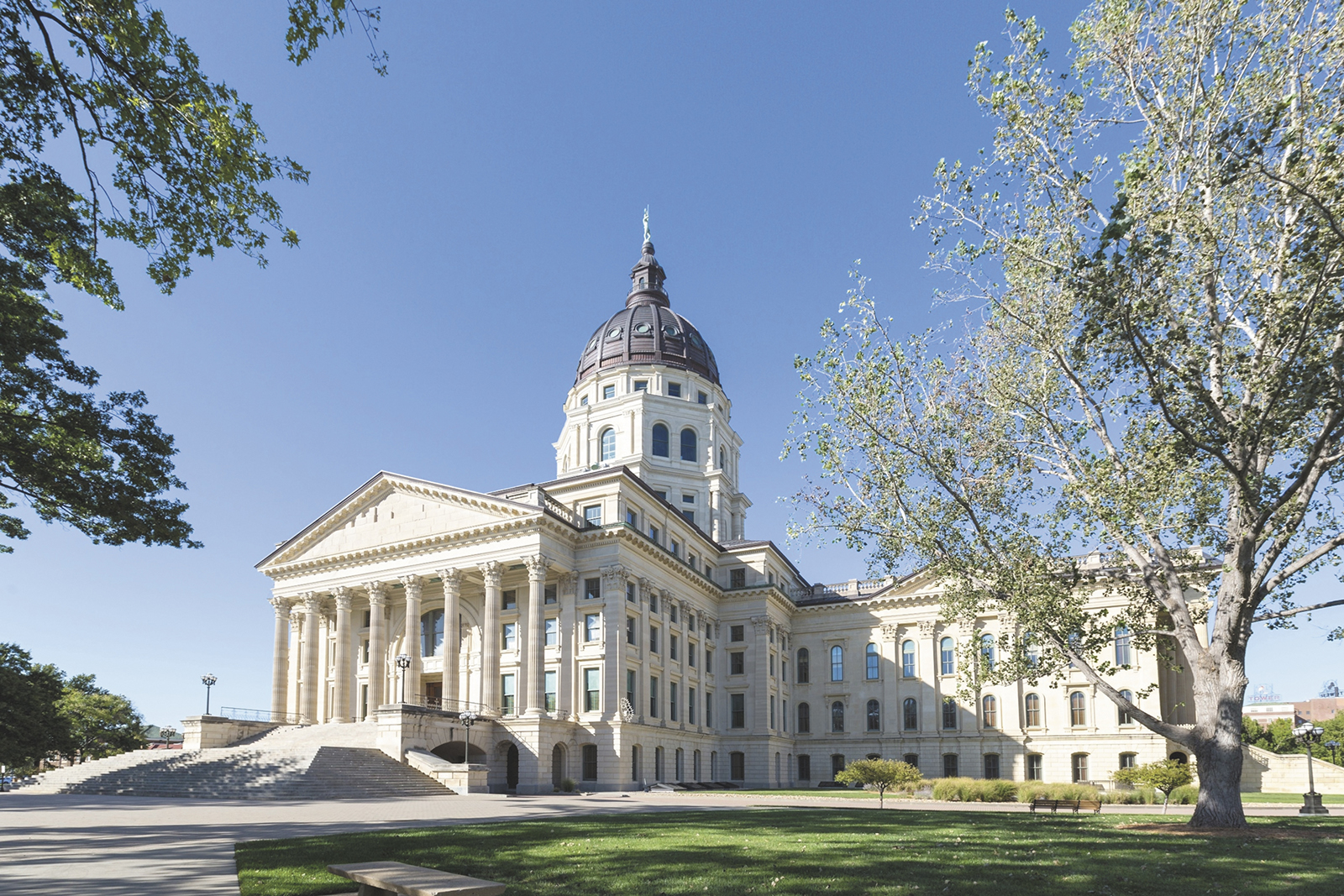An Overland Park data researcher says a striking number of registered but greatly inactive voters in Kansas provides the opportunity for mischief under the state’s presently accepted mail ballot voting authorization, and also a campaign opportunity for candidates seeking election.
Earl Glynn, who publishes research at his Substack WatchDog Lab, reviewed Kansas voter data and found some 250,000 Kansas voters haven’t participated in more than a decade, if ever. According to Glynn’s research:
- 49,667 Kansas voters, who registered to vote in 2012 or earlier, have never voted in any election according to voter history.
- 77,948 voters, who have voter history for voting in 2012 or earlier, have not voted since.
- 142,308 voters in Kansas have an “inactive” status in the voter file. This means election offices cannot contact these voters at their last known street addresses by mail. Without a known address, the election office does not know what ballot style applies to an inactive voter.
“All these voters can vote if they show up at the polls, or request an advance ballot, but don’t they merit additional scrutiny?,” Glynn asks in his report.
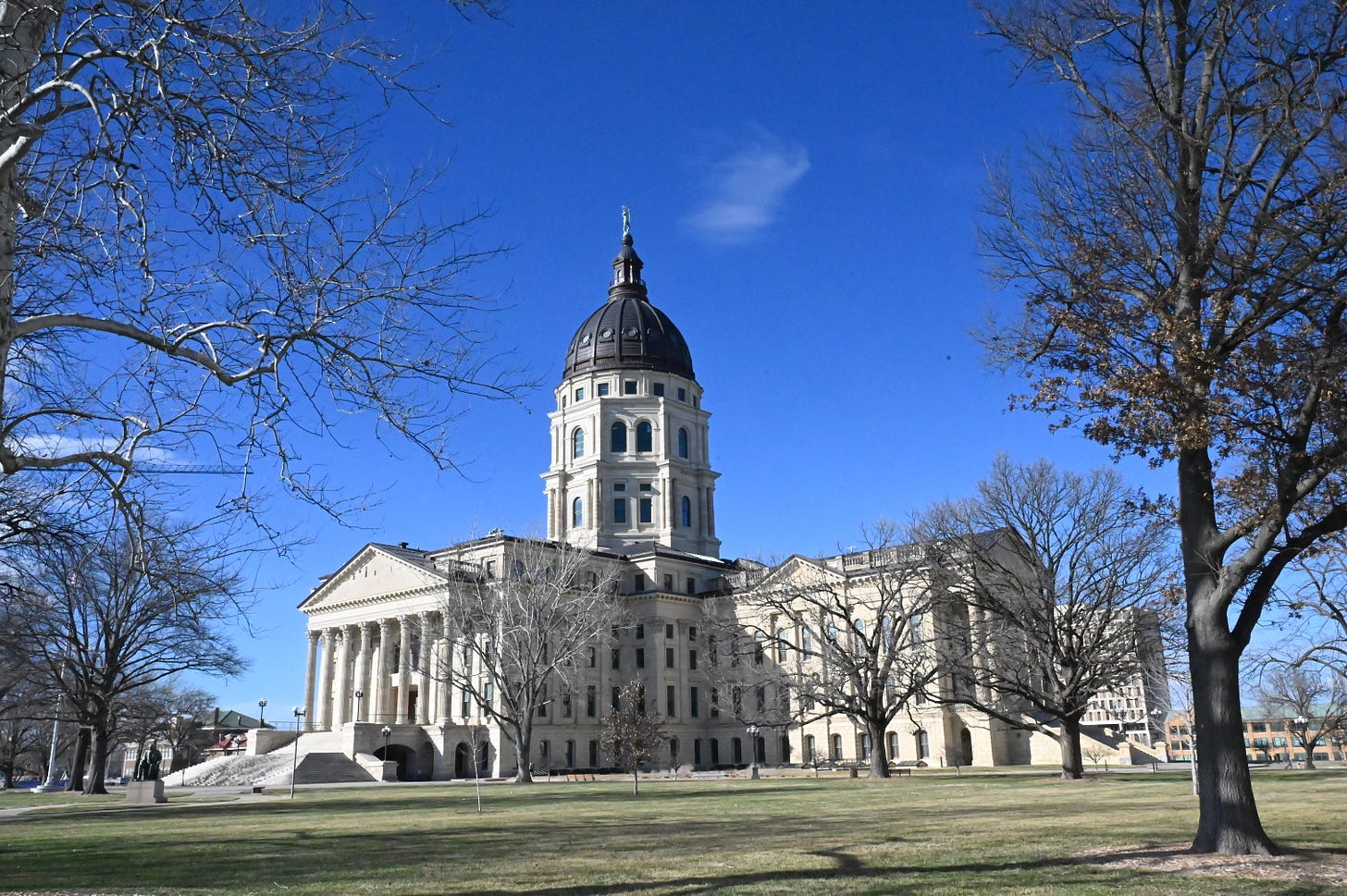
Overlap
From Glynn’s report:
Let’s determine how much overlap there is among these three sets of voters using an “UpSet plot.” An Upset plot provides information similar to a Venn diagram, but is often easier to interpret, especially when there are many sets to compare.
The blue horizontal bars at the lower left are the sets to compare, which would be the circles in a Venn diagram. The black vertical bars show the set intersections — how many voters are common to the original sets.

Interpretation of the five black vertical bars:
- 120,658 voters are “inactive” and have unknown or invalid mailing addresses.
- 65,793 have voter history from 2012 or before; no voter history in recent years. It’s unclear why most of these are not “inactive” voters now.
- 40,172 voters were registered in 2012 or before; have no voter history; have never voted. It’s unclear why most of these are not “inactive” voters now.
- 12,155 voters are inactive; have voter history from 2012 or before; have not voted in recent years.
- 9,495 voters are inactive; were registered in 2012 or before; have no voter history; have never voted
The sum of the numbers above the black bars shows how many unique voters are involved in these three issues: 120,658 + 65,793 + 40,172 + 12,155 + 9,495 = 248,273 voters.
Why do these issues matter?
University of Michigan professor J. Alex Halderman teaches in his online Securing Digital Democracy class to approach all aspects of voting and elections with a “security mindset.”
Currently there are few “security mindset” checks and balances applied to inactive voters, or those who have not communicated with their election offices in many years.
In Kansas if you vote in person one must show a valid ID, usually a driver’s license, and often one must answer questions about your name and address on the ID from the poll worker.
If you request an advance ballot one must only give a driver’s license number (or a copy of a photo ID). Someone with access to another’s ID could request a ballot. There’s no poll worker to challenge someone with a mail ballot application about their name and address — fewer safeguards for mail ballots.
It’s unclear how good the signature verification process is when a ballot is returned. There is almost no transparency on how that process works or what its failure rate is. It’s unclear how much better signature checks are than the “honor system.”
So, eliminating or reducing the number of inactive voters, or the number of voters who have last contact with the election office, would reduce the risk of mischief, especially with mail ballots.
With security breakdowns, inactive voter names could be used by corrupt election officials to cast ballots in others’ names with little chance of being caught. I’m not saying this has ever happened in Kansas, but voter “bloat” enables mischief.
Maps: differences by county
Each of these three issues show rate differences in the 105 Kansas counties in the maps below. At what point do these differences become a violation of the Fourteenth amendment for “equal protection under the laws”?
The inactive rates do not correlate with either of the other two factors by county (correlation was only 0.3).
However, “Never Voted Since 2012” has a correlation of about 0.7 with “Voted 2012 or Before.” (A correlation of 1.0 is a perfect positive correlation, and 0.0 indicates no correlation.)
Registered but never voted since 2012
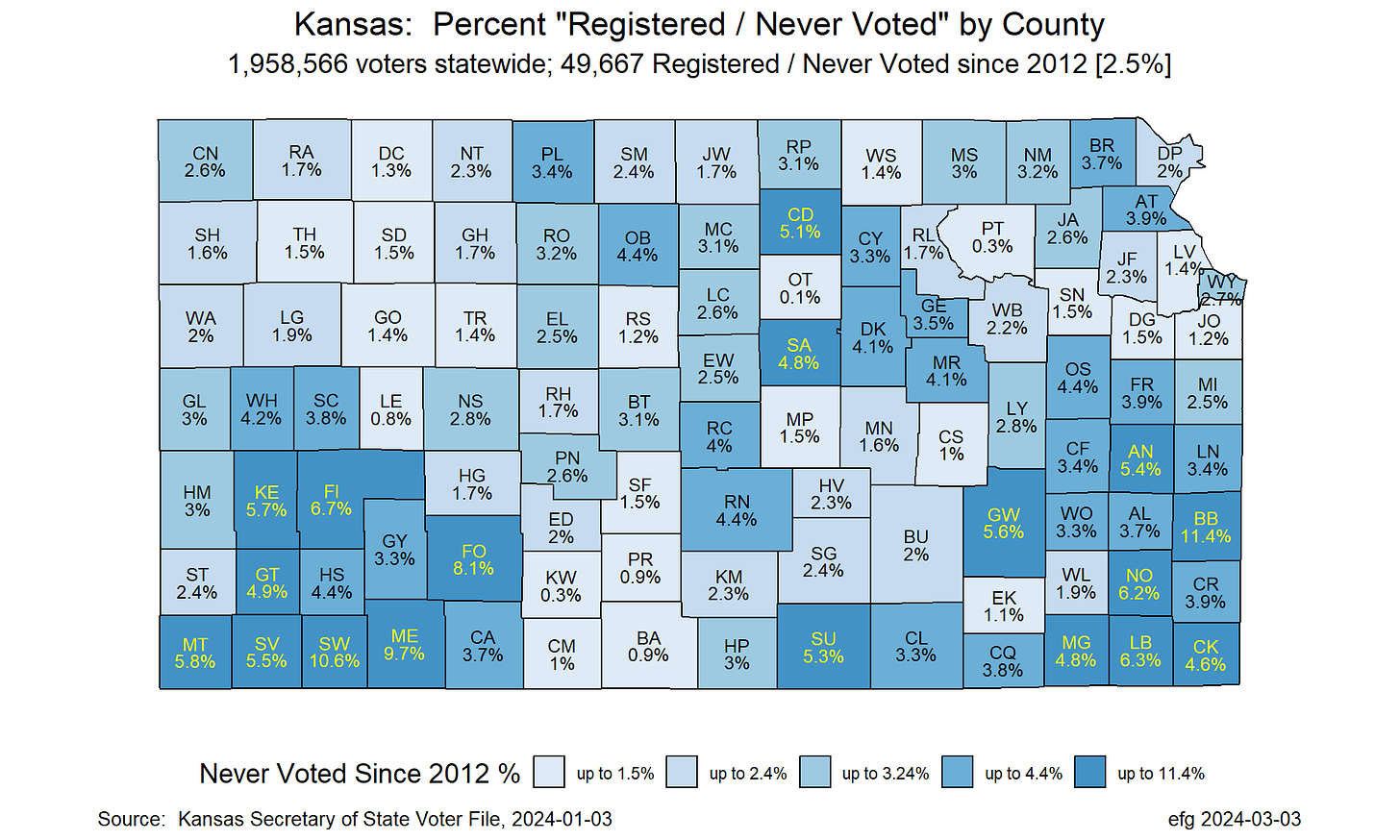
Top 5 counties with this issue:
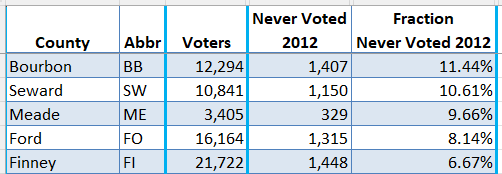
Voter history 2012 or before but no votes since
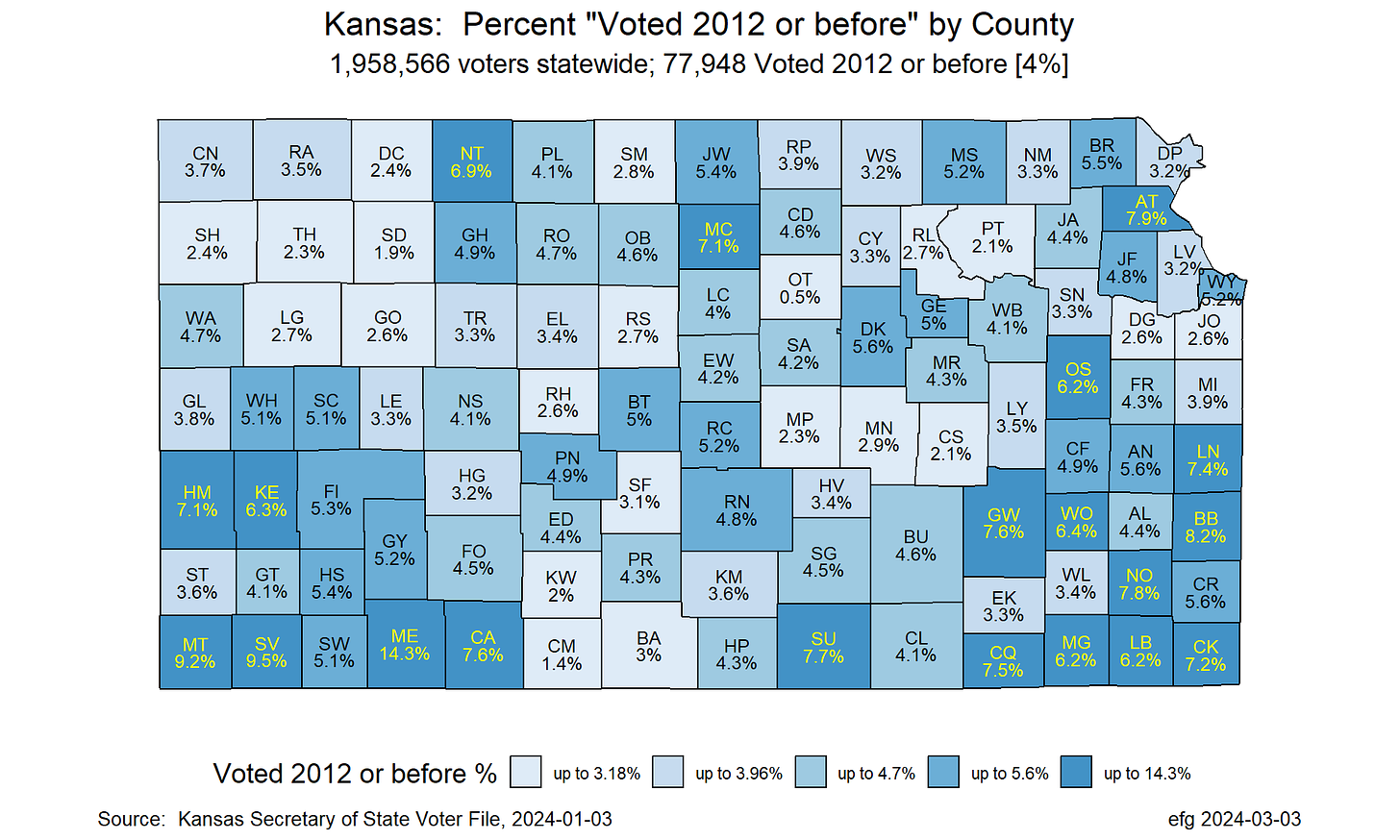
Top 5 counties with this issue:

Inactive voters

Top 5 counties with this issue:

But Glynn has noted in previous presentations the revelation of those numbers of infrequent voters also provides an opportunity to build voter margin for candidates campaigning for election or other voter referendums. Commercially available canvassing software that can be purchased by campaigns allows those voters to be identified and contacted to encourage them to support candidates or other political efforts.
By the numbers
Download this Excel file to view the raw numbers and percentages by county shown in the maps above.
Kansas Voter Bloat Three Factors
38.5KB ∙ XLSX file
Based on voter file from Kansas Secretary of State on Jan. 3, 2024.

. . .

Excel files are available upon request with complete voter file information for any subset of voters shown above for anyone to study.
Dane Hicks is a graduate of the University of Missouri School of Journalism and the United States Marine Corps Officer Candidate School at Quantico, VA. He is the author of novels "The Skinning Tree" and "A Whisper For Help." As publisher of the Anderson County Review in Garnett, KS., he is a recipient of the Kansas Press Association's Boyd Community Service Award as well as more than 60 awards for excellence in news, editorial and photography.

